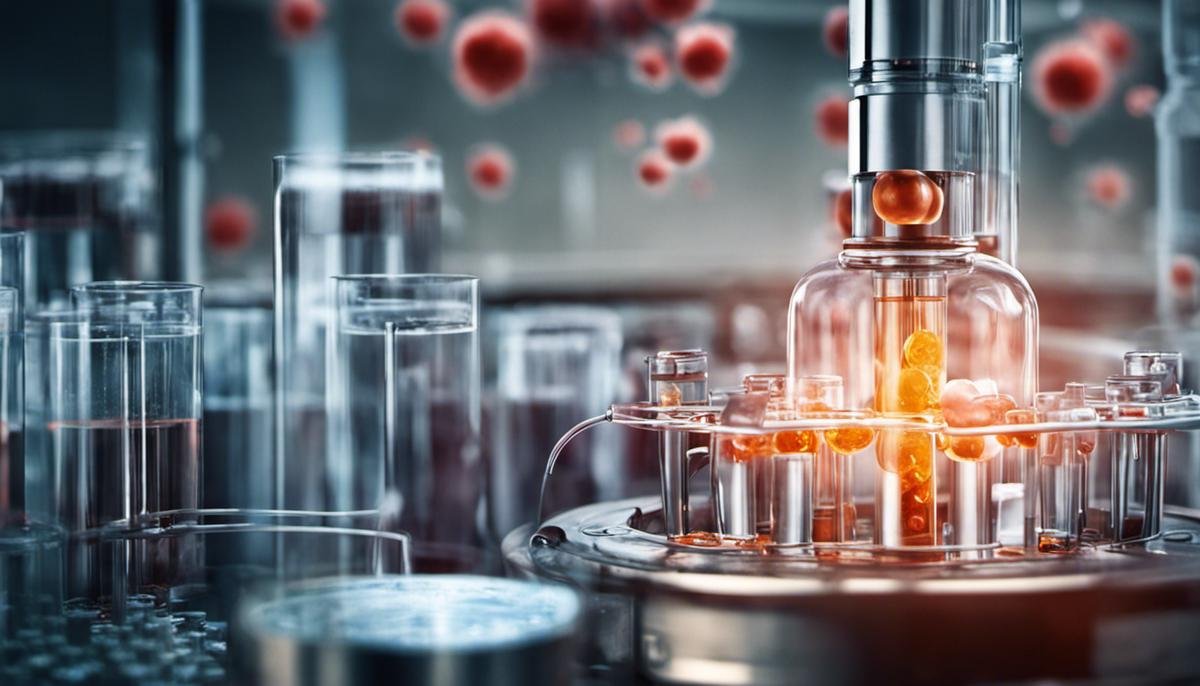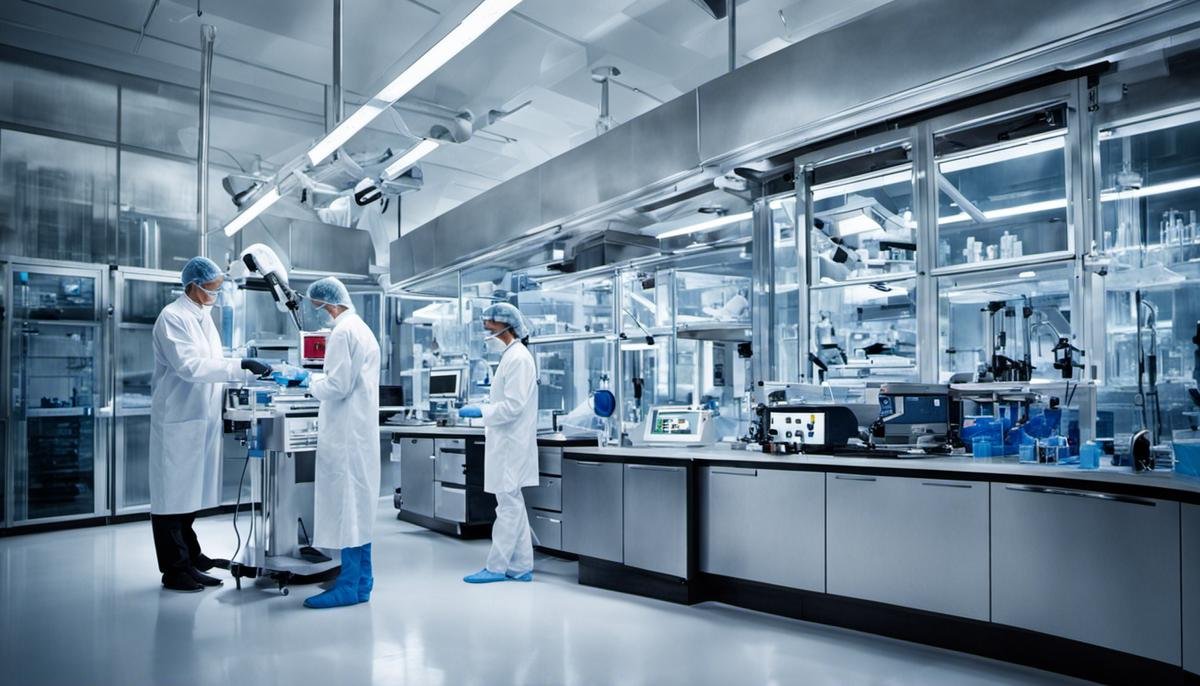
Unlocking the mysteries of Autism Spectrum Disorder (ASD) remains a crucial area of focus within the medical and scientific communities. This complex neurodevelopmental condition, intricately linked to genetics and characterized by a broad spectrum of symptoms, poses significant challenges in terms of treatment. The burgeoning field of stem cell therapy – hailed as a potential game-changer for a number of diseases and conditions, holds promise for Autism treatment. By offering a unique and cutting-edge approach to repairing neural damage, stem cell therapy represents an exciting frontier in ASD research and treatment. This exploration of Autism and stem cell therapy will delve into the underpinnings of ASD, examine the workings of stem cell therapy, and navigate the growing body of research that links the two.
Understanding Autism Spectrum Disorder (ASD)
An Insightful Exploration of Autism Spectrum Disorder and Its Impact on Individuals
Autism Spectrum Disorder (ASD), in its crudest form, could be illustrated as an intricate puzzle, its numerous multifaceted pieces presenting an assortment of challenges and strengths. ASD is a developmental disorder that impacts the social and communication skills and mental operations of those who bear its imprint. It can be observed in early infancy and generally persists throughout the individual’s lifetime. Encompassing a wide range of symptoms that arrange themselves in various combinations, the intricacies and complexities make ASD a unique journey for each individual.
Variations in ASD manifest in subtle to severe impairments in two principal domains: social interaction and communication skills, and restricted or repetitive behaviors. The deficits in communication and social interaction encompass a myriad of presentations, like difficulties in reciprocal conversation and maintaining relationships, as well as reduced sharing of emotions. It is noteworthy, however, that some individuals with ASD may be able to express themselves well in a structured setting but struggle in social spaces.
Individuals on the spectrum may also exhibit stereotyped or repetitive language, movements or use of objects, unusual sensory interest in their environment, or rigid adherence to certain routines or rituals. These manifestations are not a matter of intellectual incapacity, but rather they are threads woven into the distinctive neurological pattern that collectively forms the ASD tapestry.
Technological interventions such as Functional Magnetic Resonance Imaging (fMRI) and genetic studies have elucidated that ASD is likely to arise due to a complex interplay of genetic and environmental factors. A commonality amongst many individuals with ASD is the presence of other co-occurring conditions including epilepsy, sleep disorders, Attention Deficit Hyperactivity Disorder (ADHD), and anxiety disorders. These conditions further contribute to the complexity of the individual experiences.
ASD influences every aspect of an individual’s life – from learning, building relationships, to understanding emotions and more. Professionals who dedicate their lives to working with ASD individuals remark a guiding truth: if you’ve met one person with autism, you’ve met one person with autism. The symptoms, behaviors, and impairment levels vary widely among individuals, making it unreasonable to apply a ‘one-size-fits-all’ mentality to the management or understanding of ASD.
Contrasting perceptions often paint a picture of autism as a ‘disability’ alone. Even though ASD poses explicit challenges, it can also furnish unique strengths. Some individuals with ASD, for example, have extraordinary memory skills, heightened sense of perception in areas like music and computer systems, or intense focus and attention to detail. Therefore, to focus solely on the disability narrative obscures the diversity and full potential within the autism community.
Captivating studies speak to a critical mass of evidence that ASD individuals, with the appropriate support, can lead fulfilling lives, meaningfully participating in society. Tailored interventions and therapies can help individuals with ASD to cope with their unique challenges and amplify their strengths. Strong advocacy for early diagnosis and intervention, societal awareness, and inclusive policies are vital steps toward transforming our societies into more accommodating and nurturing spaces for people on the autism spectrum.
In sum, Autism Spectrum Disorder, with its myriad manifestations and variations, is as uniquely human as the individuals who navigate life within its bounds. It requires not pity or condescension, but understanding, respect for the lived experience, and efforts to promote an inclusive society where every individual can thrive—precisely the goals of the unending scientific quest in the magnificent realm of autism research.

Stem Cell Therapy: An Overview
Delving Deeper into the Promise of Stem Cell Therapy: Contemporary Applications in Medicine
Notwithstanding the nuances and intricacies of conditions such as Autism Spectrum Disorder (ASD), the scientific community persistently forges ahead in developing new interventions and therapeutics. At the forefront of these burgeoning treatments is stem cell therapy – a promising field of regenerative medicine – leveraging the regenerative capabilities of stem cells to heal, restore, reconstruct, and rejuvenate various parts of the body.
Stem cells, in essence, denote a category of unspecialized cells capable of differentiating into diverse specialized cells types and are recognized for their ability to self-renew indefinitely. These attributes are precisely what make stem cells exceptionally integral to therapeutic applications.
The revelation of stem cells catapulted regenerative medicine to new heights. It is the ability of these cells to transition into cells of essentially any tissue that asserts their potential in neurodevelopmental disorders such as ASD. Akin to the functionality of a master key, these cells can mold themselves to repair injury or replace damaged cells, promising the regeneration of healthy neuronal networks potentially altering the course of neurodevelopmental disorders.
In practical terms, stem cell therapy is currently applied in two prominent methods: Autologous and Allogeneic. Autologous therapy depends on obtaining stem cells from the patient’s body itself, usually bone marrow or adipose tissue. These cells are then processed and re-administered into the patient. On the other hand, allogeneic therapy depends on a compatible donor’s stem cells. In such cases, umbilical cord blood or bone marrow serves as a rich source of stem cells.
The scope of stem cell therapy extends beyond neurodevelopmental disorders. Today, its most accredited application is in the treatment of blood-related diseases. Certain leukemias and lymphomas, for example, can be treated with hematopoietic stem cell transplantation (HSCT) – a process replicating the mechanism of bone marrow transplantations.
In diseases like Parkinson’s, Alzheimer’s, and spinal cord injuries, where the neurodegenerative damage is extensive, stem cells harboring the potential to differentiate into healthy, functioning neurons offer a ray of hope. And for cardiac ailments or conditions like diabetes, where tissue or organ damage is key, stem cells hold the promise of regenerating impaired cells and restoring Functionality.
However, it is crucial to underline that stem cell therapy, despite its vast promise, is still in the developmental phases of its journey in medicine. Considerable scientific and clinical investigations must be conducted to fully explore its safety, efficacy, and reliability. Furthermore, ethical considerations linked with certain sources of stem cells continue to stir discourse within the scientific and public sectors.
Nevertheless, even under these constraints, the notion of using the body’s self-healing mechanism to treat diseases that were once considered irremediable presents an unquestionably compelling premise. It continues to drive scientific inquiry whilst catalyzing a paradigmatic shift towards novel horizons in regenerative medicine. In understanding disorders such as ASD and many others, stem cell therapy may indeed be a game-changer, holding the potential to transform countless lives.

Stem Cells and Neurological Disorders
Delve deeper into the paradox that highlights the profound interplay between stem cells and neurological disorders, specifically Autism Spectrum Disorder (ASD). The complex mechanisms that underpin the etiology of ASD extend beyond the genetic and environmental factors previously mentioned. Stem cell technology, with its regenerative prowess, captures the essence of the philosophy that, in the realm of scientific discovery and innovation, nothing is linear or predefined.
Stem cells uniquely possess an inherent potential for self-renewal and differentiation. In the research landscape, they serve as vessels of understanding, revealing insight into the human pathophysiological processes. More significantly, stem cells provide tangible prospects for therapeutic modalities, particularly in disorders involving the nervous system, where the inherent capacity for repair and regeneration is limited.
To draw a connection between stem cells and ASD, one must first understand the nature of damage within the ASD-affected brain. Disruptions in early brain development, anomalies in synaptic spine density, aberrant neural connectivity, and inflammation present as significant characteristics of ASD. Intriguingly, stem cells’ plasticity and capacity to differentiate into various cell types, including neurons and glia, offer unprecedented hope for rectifying these anomalies.
Furthermore, stem cells are capable of producing significant quantities of neurotrophic factors, aiding in neuronal survival, differentiation, and synaptic plasticity. These facets feed into the hypothesis positing the transformative potential of stem cell therapy in neurodevelopmental disorders like ASD.
There are two primary ways in which stem cells can be harnessed for ASD therapy: Allogeneic and Autologous stem cell transplants. While the Allogeneic method relies on using stem cells from a donor, the Autologous process employs the individual’s own stem cells—both methods presenting unique advantages and challenges.
The journey of translating the potential of stem cell therapy into a real-world therapeutic application for neurodevelopmental disorders like ASD requires a multi-faceted approach. Preliminary findings underscore the significance of stem cell therapy in ASD treatment. However, it is critical to further investigate and verify these findings through rigorous, scientifically sound, and ethically conducted clinical trials.
Additionally, ethical considerations surrounding stem cell procurement and usage must be thoroughly navigated. Distilled from the broader sphere of regenerative medicine, stem cell technology serves as a double-edged sword. It represents both immense promise for human well-being and potent questions about ethical boundaries. This dual aspect underscores the necessity for solid, well-enforced regulatory frameworks.
The landscape of stem cells and ASD is an incredibly intricate nexus of potential and challenges. A holistic and meticulous approach is needed to unlock its comprehensive therapeutic potential. With continued research, this promising field could significantly transform the landscape of neurological disorders like ASD, affording them recognition not just as conditions to be managed, but diseases that can be effectively treated, reinstating the potential for an improved quality of life to countless individuals. It is a testament to the importance of a relentless pursuit of knowledge, respect for the ethical limits, and a deep, vested interest in advancing the human condition.

Stem Cell Therapy for Autism: Existing Researches
While exploring the juncture between Autism Spectrum Disorder and stem cell therapy, it becomes evident that the current body of scientific literature illustrates an intriguing, albeit nascent, synthesis of these two domains.
Stem cell therapy, lauded for its potential in the realm of regenerative medicine, offers a glimmer of hope to those affected by ASD, promising a frontier of therapeutic strategies yet to be fully harnessed.
Albeit preliminary, existing studies illuminate a novel vantage point, underscoring the potential of mesenchymal stem cells (MSCs) in the remediation of ASD. Renowned for their potent immunomodulatory and anti-inflammatory properties, MSCs have been revealed in pre-clinical research to curtail the inflammatory responses and oxidative stress implicated in ASD, paving way for enhanced synaptogenesis and neurogenesis.
Forking the path of exploration, a confluence of experimental findings highlight another compelling route – the induction of pluripotent stem cells (iPSCs) derived from individuals with ASD. This enables intricate examination of neuronal development and connectivity that is otherwise impossible. Harnessing the potential of iPSC technology, researchers have simulated ‘autism in a dish’, offering a fresh perspective on how dysregulations at a cellular level transcribe into the heterogeneous behavioral phenotype encompassed under the ASD purview.
Amongst other promising avenues, the exploration of neuronal cells derived from ASD patient’s iPSCs present an opportunity to scrutinize possible therapeutic strategies. The potential offered by these mechanisms would allow for the correction of ASD-associated pathologies on a cellular level before transplantation, thereby presenting a promising prospect for reducing ASD symptoms.
Beneath the veneer of optimism, it remains essential to address the glaring conundrum – the anecdotal and empirical successes of stem cell therapies conflict largely with the lack of comprehensive, placebo-controlled, double-blind clinical studies verifying these claims. This scenario underscores the paramount importance of rigorous clinical trials designed to verify the therapeutic utility, safety, and efficacy of stem cells for treating ASD.
Furthermore, the nature of stem cell acquisition, particularly if embryonic or fetal sources are involved, precipitates a quagmire of ethical dilemmas. It is, therefore, incumbent upon the scientific community to remain poised on the fulcrum of promise and ethical propriety, ensuring research progresses in a manner that respects the sanctity of life at its earliest stages while striving for cures to debilitating disorders.
In conclusion, while a definitive verdict on the prospects of stem cell therapy for Autism remains a harbinger of the future, the initial forays into this research arena are certainly promising. With potential breakthroughs beckoning on the horizon, the dawn of a new era in Autism therapy may not be far. However, as with any novel therapeutic approach, the path forward necessitates robust investigation, ethical deliberations, and rigorous clinical trials. The exploration of this novel territory of hope remains a testament to the resilience and unfailing pursuit of knowledge from the world of science, presenting an unparalleled narrative of innovation, empathy, and an unyielding commitment to enhancing the human condition.

Challenges and Future Directions
Challenges in Therapeutic Exploitation of Stem Cells for Autism
Turning the course to a central issue obstructing the broad application of stem cell therapy for Autism Spectrum Disorder (ASD) is the innate heterogeneity of the condition. ASD is not a uniform disorder, but rather represents a spectrum, encompassing a broad range of symptoms and behavioral patterns. Consequently, identifying and applying a universal biological remedy through stem cell therapy remains a lofty endeavor. It’s also critical to highlight that ASD is a complex neurodevelopmental disorder, involving disarrangements in various cell types and networks, which adds layers of complexity to elucidate the root cause and establishing a definitive cure.
Limited understanding of stem cell biology and ASD pathophysiology generates a significant impediment towards the successful application of stem cell therapy to ASD. While strides have been made, filling knowledge gaps is critical to fostering successful treatment outcomes. Key advancements hinge on refining understanding of how stem cells interact with the ASD brain, how these cells can be manipulated for therapeutic gains, and how to leverage inherent neural plasticity mechanisms.
Technology incubates another unavoidable hurdle: retaining the stem cells at the affected sites. The CNS is a highly protected region with complex anatomical and physiological barriers, like the blood-brain barrier, which presents a formidable obstacle for stem cell delivery. Implanted stem cells must also survive in the foreign host environment and integrate into pre-existing circuits to enact optimal therapeutic output.
Moreover, persistent questions about the safety, efficacy, and reliability of stem cell therapy remain. Potential risks, including tumor formation, cellular rejection, and unintended systemic effects, necessitate rigorous evaluation. Refining techniques relating to harvesting, purifying, culturing, and transplanting stem cells are pivotal areas to address these safety concerns.
Ethical quandaries further complicate the landscape. Balancing potential therapeutic returns with concerns revolving around the source of stem cells, informed consent, and potential exploitation remains intricate.
Looking Forward: The Future of Stem Cell Therapy in Autism
A journey marked by challenges is also rich in untapped possible trajectories. High-throughput screening approaches, where large libraries of pharmacologically active compounds are tested to identify potential therapeutic agents on stem-cell derived neurons, may unlock underexplored ASD mechanistic insights. These insights may further the development of iPSC production methods to provide accurate disease models for drug testing and elucidation of mechanistic pathways involved in ASD.
Once more is known about the underlying mechanisms at play, more specific and effective therapeutic strategies using stem cells will be within reach. This could take the form of stem cells modified to overexpress specific neurotrophic factors, securing their release in ASD affected brain areas, or manipulating stem cells to modulate dysregulated immune responses implicated in ASD.
Sustained advancements in nanotechnologies, biomaterials, and drug delivery techniques will bolster efforts to overcome physical barriers to stem cell delivery. Collaborative, interdisciplinary research efforts will be essential to surmount the challenges lying in the path of exploiting stem cell therapy for ASD, balancing the dual quest for scientific progress and ethical integrity.
Research in this field should be, above all, patient-centered and geared toward improved quality of life for the autism community. With patient interests at the forefront, the scientific community can work to empower those this disorder affects while pursuing responsible, innovative therapeutic strategies. Vitally, as science boldly strides towards new frontiers, it must carry with it a keen sense of ethical responsibility, reverence for the sanctity of life, and an unyielding commitment to improving the human condition.

Despite the considerable hurdles that lay ahead, the intriguing realm of stem cell therapy continues to inspire hope for future breakthroughs in the treatment of Autism Spectrum Disorder. The fascinating concept of harnessing the body’s own biological machinery to repair neural damage and alleviate symptoms brings a new array of possibilities to the table. Now, more than ever, the need to address the ethical and legal complexities surrounding stem cell use adds another layer of urgency in progressing the research. As we continue to deepen our understanding of both Autism and stem cell therapy, the focus remains on finding viable, safe, and effective treatments that hold the capacity of transforming the lives of individuals living with ASD, whilst navigating the scientific, legal, and ethical landscape




